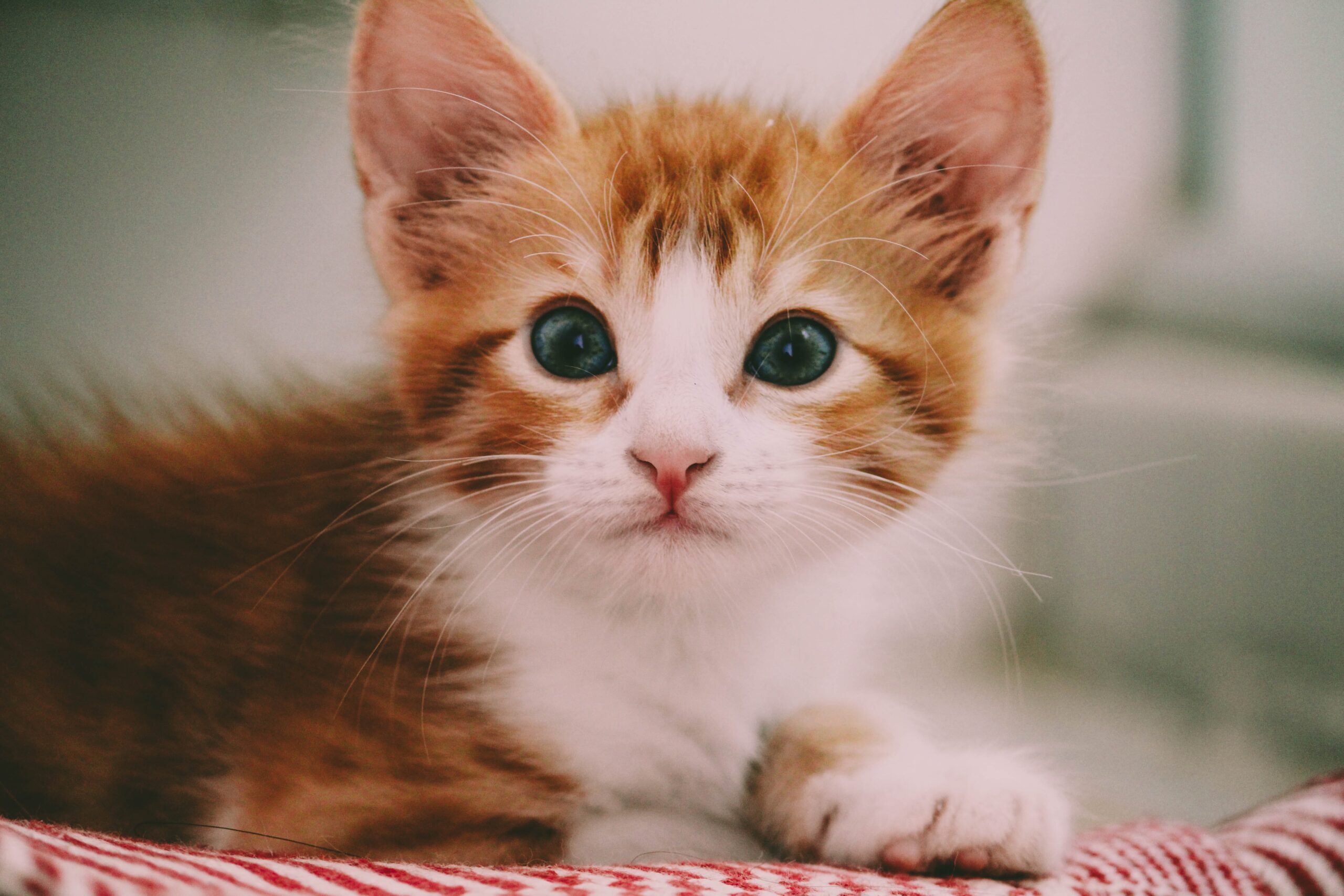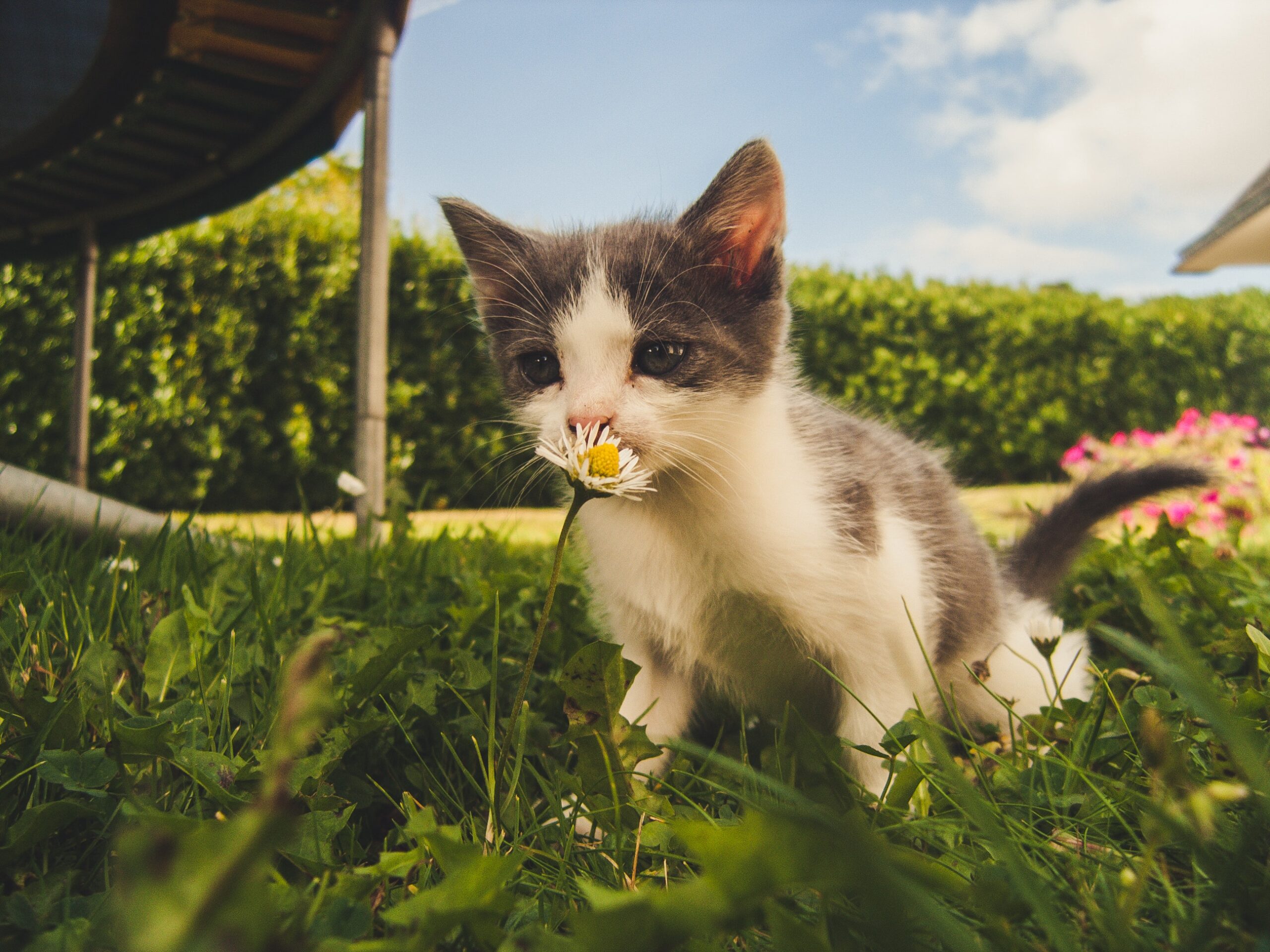Introduction
Brief Overview of Cats’ Reputation as Expert Sleepers
Cats have long held a reputation for being expert sleepers. Whether it’s the graceful domestic feline curled up on the windowsill or the agile wild cat snoozing under a shady tree, these creatures seem to have mastered the art of slumber. It is not uncommon to catch our feline companions napping multiple times throughout the day, seemingly without a care in the world. But have you ever wondered why cats sleep so much or what drives their unique sleep patterns?
Importance of Sleep for Feline Health and Behavior
Before we explore the various sleep patterns exhibited by cats, it is crucial to understand the significance of sleep in their lives. Like humans and many other animals, sleep is a fundamental physiological necessity for felines. Sleep plays a vital role in promoting overall health and well-being, aiding in physical recovery, memory consolidation, and even emotional regulation.
Quality sleep is especially crucial for kittens, as it contributes to their growth and development. For adult cats, sufficient sleep helps them maintain a healthy immune system, improve cognitive function, and regulate hormones. Furthermore, proper rest supports a cat’s energy levels and mood, contributing to a content and well-adjusted feline companion.
Purpose of the Article: To Delve into Various Sleep Patterns Exhibited by Cats
In this article, we will embark on an exciting journey to uncover the intriguing sleep patterns that cats exhibit. While cats, like many animals, have a circadian rhythm, they possess unique characteristics and variations in their sleep-wake cycles. From their crepuscular nature to their polyphasic sleep tendencies, we will explore the different ways in which cats approach sleep.
Understanding these sleep patterns is not only fascinating for cat enthusiasts but also beneficial for cat owners and caregivers. By gaining insight into our feline companions’ sleep behaviors, we can create an environment that supports their natural tendencies, promotes better sleep quality, and enhances their overall health and happiness.
In the following sections, we will delve into the specific sleep patterns displayed by cats, offering valuable insights and practical tips for cat owners to optimize their pets’ sleep routines. So, let’s embark on this journey of discovery and unravel the enigma of different sleep patterns in cats.
The Sleep-Wake Cycle of Cats
Understanding the Natural Sleep-Wake Cycle of Felines
Cats are classified as “crepuscular” animals, meaning they are most active during the dawn and dusk periods. This crepuscular nature is deeply ingrained in their DNA, stemming from their ancestors’ hunting habits. In the wild, wildcats, the ancestors of domestic cats, would hunt during low-light conditions to maximize their chances of catching prey while avoiding potential predators.
Due to this evolutionary heritage, domestic cats have inherited a sleep-wake cycle that aligns with their crepuscular nature. During the night and early morning hours, cats tend to be more active and alert, seeking opportunities to explore their surroundings and engage in play. As the day progresses, they may take short naps to conserve energy until the evening, when their activity levels pick up once more.
While the crepuscular behavior is dominant in cats, it is essential to recognize that individual variations can occur. Some cats may exhibit more nocturnal tendencies, preferring to be more active during the night, while others might adapt their patterns to their human household’s schedule.
Factors Influencing a Cat’s Sleep Duration and Frequency
Several factors influence a cat’s sleep duration and frequency. One of the primary determinants is their age. Kittens, in their early developmental stages, require more sleep as their bodies and minds grow rapidly. On average, kittens can sleep up to 20 hours a day, helping them recharge and supporting their healthy growth.
As cats mature into adults, their sleep needs generally decrease, but they still maintain their crepuscular tendencies. Adult cats may sleep anywhere from 12 to 16 hours a day, with variations depending on individual factors like breed, health, and lifestyle.
Additionally, a cat’s environment plays a crucial role in determining its sleep patterns. Cats living in a secure and enriching environment may feel more comfortable and relaxed, leading to better quality sleep. Conversely, stress, anxiety, or changes in their surroundings can disrupt their sleep-wake cycle.
Differences between Wild and Domestic Cats’ Sleep Patterns
Wild and domestic cats exhibit some differences in their sleep patterns due to the contrasting environments they inhabit. Wild cats face more challenges in terms of finding food, avoiding predators, and surviving in their natural habitats. As a result, they may sleep for shorter periods but more frequently, allowing them to conserve energy while remaining vigilant.
On the other hand, domestic cats, especially those living in safe and well-provided households, do not face the same survival pressures as their wild counterparts. This relative safety allows them to have more extended and uninterrupted sleep periods. Domestic cats may also adjust their sleep schedules to align with their human companions, particularly if they receive attention, playtime, and meals during specific times of the day.
Understanding the sleep-wake cycle of cats, as well as the factors influencing their sleep patterns, can help cat owners provide the appropriate care and environment to support their pets’ natural behaviors. By doing so, we can ensure that our feline friends enjoy optimal health, contentment, and an overall improved quality of life.
Crepuscular Nature: The Twilight Sleepers
Defining Crepuscular Behavior in Cats
Crepuscular behavior refers to the characteristic activity pattern of cats during the twilight hours, which are the periods of low-light conditions occurring at dawn and dusk. During these times, cats are most active and alert, engaging in various activities such as hunting, exploring their territory, and socializing. Crepuscular animals, like cats, have evolved to take advantage of these specific times of day to optimize their chances of finding prey and avoiding potential predators.
Evolutionary Reasons for Crepuscular Activity
The crepuscular nature of cats can be traced back to their wild ancestors’ hunting habits. Wildcats, from which domestic cats descended, are opportunistic predators that rely on stealth and surprise to capture their prey. By being active during the twilight hours, wildcats could benefit from the reduced visibility, giving them a tactical advantage over both their prey and predators.
Furthermore, crepuscular activity also allows cats to conserve energy during the hotter parts of the day when temperatures are high, helping them avoid excessive exertion and potential heat-related stress.
Typical Crepuscular Sleep Patterns in Domestic Cats
In domestic settings, cats often exhibit a predictable crepuscular sleep-wake cycle. As the sun sets and the surroundings become dimmer, many cats become more active, displaying heightened playfulness and curiosity. This time aligns with their natural instincts to hunt and explore.
During the early morning hours, typically before dawn, cats may also experience a period of increased activity. This behavior is sometimes referred to as the “morning crazies,” where cats may race around the house, chasing imaginary prey or toys.
After their crepuscular bursts of energy, domestic cats tend to settle down for rest during the day, often taking multiple short naps. These naps are essential for conserving energy and recharging their bodies for their next crepuscular activity phase.
How to Adapt to Your Cat’s Crepuscular Schedule
Adapting to your cat’s crepuscular schedule can create a more harmonious and fulfilling environment for both you and your feline companion. Here are some tips to help you accommodate their natural behavior:
- Interactive Playtime: Engage your cat in interactive play sessions during their active periods. Use toys that mimic the movements of prey to satisfy their hunting instincts and provide mental stimulation.
- Scheduled Feedings: Try to schedule your cat’s meals around their crepuscular activity, providing them with a satisfying meal before or after their active phase.
- Enriching Environment: Create a stimulating environment with climbing structures, scratching posts, and interactive toys that keep your cat engaged during their waking hours.
- Evening Interaction: Spend quality time with your cat during the evening when they are most active. This can strengthen your bond and provide a positive outlet for their energy.
- Respect Their Rest: While cats are active during twilight hours, remember that they also need rest throughout the day. Provide quiet and comfortable resting spots for them to recharge.
By acknowledging and embracing your cat’s crepuscular nature, you can create a supportive and enriching environment that caters to their natural instincts. Understanding and adapting to their sleep-wake cycle not only promotes their well-being but also strengthens the bond between you and your feline companion.
Polyphasic Sleepers: The Power Nappers
Explaining Polyphasic Sleep and Its Benefits
Unlike monophasic sleep, where individuals sleep for one continuous block each day, polyphasic sleep involves multiple shorter sleep periods throughout the day. Cats are excellent examples of polyphasic sleepers, and this unique sleep pattern offers several benefits for their physiology and behavior.
Polyphasic sleep allows cats to conserve energy while remaining alert and responsive to their environment. By taking short naps throughout the day, cats can quickly rejuvenate their bodies and minds, preparing them for their next period of activity. This adaptation stems from their natural hunting instincts, enabling them to be ready to pounce on potential prey or escape from predators at a moment’s notice.
Additionally, polyphasic sleep enables cats to maintain a level of vigilance even during rest. Their short naps serve as a defense mechanism, as they can quickly awaken from sleep if they sense any potential danger or disturbance in their surroundings.
The Cat’s Ability to Nap Throughout the Day
Cats possess an innate ability to nap frequently throughout the day, allowing them to maintain their polyphasic sleep pattern. On average, cats can take anywhere from 12 to 16 naps in a 24-hour period, each nap lasting from a few minutes to a couple of hours.
These naps are not merely a sign of laziness but are a crucial aspect of their survival and overall well-being. Polyphasic sleep helps cats optimize their rest and activity cycles, promoting their physical and cognitive health.
Identifying Signs of a Healthy Polyphasic Sleep Pattern
Recognizing signs of a healthy polyphasic sleep pattern in your cat is essential for understanding their well-being. Some indicators of a healthy sleep pattern in cats include:
- Frequent Napping: Observing your cat take multiple naps throughout the day is normal and indicates they are following their polyphasic sleep pattern.
- Alert and Responsive: Cats with a healthy sleep pattern will be alert, responsive, and readily wake up from their naps when stimulated or called.
- Playful Behavior: A well-rested cat will show interest in playing and exploring their environment during their active periods.
- Consistent Grooming: Cats with a balanced sleep routine will maintain regular grooming habits.
Creating a Conducive Sleep Environment for Your Cat’s Power Naps
As a responsible cat owner, you can contribute to your feline companion’s well-being by providing a conducive sleep environment that supports their polyphasic sleep pattern:
- Quiet and Comfortable Spots: Ensure your cat has access to quiet and comfortable spots around the house where they can retreat for their power naps undisturbed.
- Temperature Control: Cats prefer warm environments, so ensure their chosen napping spots are cozy and away from drafts.
- Cat-Friendly Furniture: Invest in cat-friendly furniture, such as cat trees, cozy beds, or window perches, to offer a variety of appealing napping spots.
- Sunlit Areas: Cats are attracted to sunlit spots, so position their resting spots near windows or areas with natural light.
- Respect Their Sleep: Cats’ sleep patterns are crucial for their well-being, so avoid disturbing them during their naps and allow them to wake up naturally.
By understanding and accommodating your cat’s polyphasic sleep pattern, you can create an environment that fosters their natural instincts and contributes to their overall happiness and health as power nappers.
Catnaps: The Short Sleepers
Defining Catnapping Behavior
Catnapping behavior refers to the tendency of some cats to take short and frequent naps throughout the day. Unlike polyphasic sleepers who have multiple sleep periods of varying lengths, catnappers primarily engage in short naps that typically last for only a few minutes to half an hour.
Reasons Why Some Cats Prefer Short Naps
Several factors can contribute to a cat’s preference for short naps:
- Vigilance: Cats are natural predators, and even during rest, they maintain a level of vigilance to respond quickly to potential threats or opportunities.
- Energy Conservation: Short naps allow cats to conserve energy while still being alert for any sudden changes in their environment.
- Domestic Environment: In domestic settings, cats may feel safer and less vulnerable, allowing them to take shorter, more frequent naps.
- Physiological Needs: Individual cats may have varying sleep requirements based on their age, health, and activity levels.
Recognizing Signs of Fatigue and Overexertion
While catnapping is a normal behavior, it is essential for cat owners to recognize signs of fatigue and overexertion to ensure their feline friend’s well-being:
- Lethargy: Unusual or excessive lethargy may indicate that a cat is not getting enough restorative sleep.
- Lack of Playfulness: A cat that is consistently disinterested in play or interaction might be experiencing fatigue.
- Changes in Behavior: If a cat’s behavior changes drastically, such as becoming irritable or withdrawn, it could be a sign of sleep deprivation.
- Weight Loss or Gain: Sleep disruptions may affect a cat’s appetite, leading to either weight loss or weight gain.
Strategies to Support Catnappers’ Restorative Sleep
- Provide a Quiet Environment: Create a calm and quiet space in your home where your cat can retreat for uninterrupted rest.
- Respect Their Boundaries: Allow your cat to choose their preferred napping spots and avoid disturbing them during their sleep.
- Regular Play and Stimulation: Engage in interactive play sessions to stimulate your cat mentally and physically, helping them expend energy and promoting better sleep.
- Cat-Friendly Bedding: Provide comfortable and cozy bedding for your cat to encourage them to relax and nap comfortably.
- Regular Veterinary Check-ups: If you notice any significant changes in your cat’s sleep patterns or behavior, consult your veterinarian to rule out any underlying health issues.
Remember that each cat is unique, and their sleep needs may vary. While some cats are natural catnappers, others may lean more towards polyphasic sleep patterns or crepuscular activity. Understanding and respecting your cat’s individual sleep preferences will help ensure they lead a healthy and content life as the short sleepers they are.
Marathon Sleepers: The Long-Hour Snoozers
Examining Cats with Prolonged Sleep Patterns
Marathon sleepers, as the name suggests, are cats that exhibit extended periods of sleep, often exceeding the typical 12 to 16 hours observed in most adult cats. These felines may spend up to 18 to 20 hours of sleep each day, making them appear particularly sedentary and lethargic compared to their more active counterparts. While marathon sleepers may raise concerns for some cat owners, it is essential to understand the reasons behind their extended sleep patterns.
Possible Health and Environmental Factors Influencing Extended Sleep
- Age: Older cats tend to sleep more than younger ones. As cats age, they may naturally become more sedentary and require more rest.
- Health Conditions: Certain health conditions, such as hypothyroidism, diabetes, or infections, can lead to increased fatigue and more extended sleep in cats.
- Comfort and Safety: Cats that feel secure and comfortable in their environment may be more inclined to indulge in prolonged periods of rest.
- Seasonal Variations: Cats may adapt their sleep patterns based on seasonal changes, with increased sleep during colder months and longer nights.
- Reduced Stimulation: Cats in low-stimulation environments may resort to longer sleep durations to pass the time.
Distinguishing Between Normal and Excessive Sleep Duration
While marathon sleepers’ behavior may seem concerning, it is crucial to differentiate between normal and excessive sleep duration. Factors to consider include:
- Age: Older cats naturally require more sleep, so their extended sleep periods may be considered normal.
- Health: Monitor your cat for any signs of illness, lethargy, or changes in behavior that may indicate a health issue.
- Daily Activities: If your cat wakes up periodically to eat, groom, and interact, their long sleep duration might not be a cause for concern.
- Environmental Factors: Consider the comfort and safety of your cat’s living space. If they feel secure and stress-free, extended sleep might be expected.
If you are uncertain about your cat’s sleep patterns or concerned about their health, it is best to consult with a veterinarian to rule out any underlying medical issues.
Catering to Marathon Sleepers’ Unique Needs
- Regular Exercise: While marathon sleepers may have extended rest periods, providing regular play and exercise opportunities is essential to maintaining their physical and mental health.
- Environmental Enrichment: Offer engaging toys, climbing structures, and interactive activities to stimulate your cat during their wakeful hours.
- Veterinary Check-ups: Schedule regular check-ups with your veterinarian to monitor your cat’s health and address any concerns regarding their sleep patterns.
- Temperature Control: Ensure your home is at a comfortable temperature, as extreme cold or heat may affect your cat’s sleep duration.
- Patience and Understanding: Be patient with your marathon sleeper and understand that their prolonged sleep is likely a part of their natural behavior.
In conclusion, marathon sleepers may seem like they’re snoozing their days away, but their extended rest periods are often within the normal range for certain cats. By considering their age, health, environment, and level of engagement, you can cater to their unique needs and provide a supportive and enriching environment for their well-being.
Abnormal Sleep Patterns in Cats
Identifying Potential Sleep Disorders in Cats
While cats are known for their unique and varied sleep patterns, certain abnormal sleep behaviors may indicate underlying health issues or sleep disorders. Identifying these patterns can help cat owners recognize when their feline companion might need professional attention.
- Insomnia: If a cat constantly struggles to fall asleep or stay asleep, it may be experiencing insomnia, which could result from stress, pain, or an underlying medical condition.
- Excessive Sleepiness: Cats that exhibit extreme lethargy, even during their active periods, might be excessively sleepy due to certain health problems or medications.
- Frequent Nighttime Awakening: Cats that frequently wake up during the night and display restlessness might have trouble settling down, potentially pointing to sleep disturbances.
- Sleep Apnea: Similar to humans, cats can experience sleep apnea, where their breathing becomes irregular or temporarily stops during sleep.
Common Sleep-Related Issues and Their Causes
- Stress and Anxiety: Changes in a cat’s environment, such as moving to a new home or the introduction of a new pet, can lead to stress and disrupt their sleep patterns.
- Pain and Discomfort: Physical discomfort or pain resulting from injuries or medical conditions can prevent cats from getting the rest they need.
- Medical Conditions: Underlying health issues, such as hyperthyroidism, kidney disease, or respiratory problems, can impact a cat’s sleep.
- Age-Related Changes: Senior cats may experience changes in their sleep patterns due to age-related factors.
Seeking Professional Veterinary Advice for Sleep Disturbances
If you notice abnormal sleep patterns or significant changes in your cat’s sleep behavior, it is essential to seek professional veterinary advice promptly. A veterinarian can conduct a thorough examination, evaluate your cat’s health history, and perform any necessary tests to identify potential underlying issues.
Based on the diagnosis, the veterinarian can recommend appropriate treatments, behavioral modifications, or environmental adjustments to improve your cat’s sleep and overall well-being. Early intervention can prevent potential health complications and improve your cat’s quality of life.
In some cases, sleep disturbances in cats may be behavioral, stress-related, or a result of environmental factors. In such situations, your veterinarian may also offer guidance on creating a more conducive and stress-free environment for your feline companion to support healthy sleep habits.
Remember, every cat is unique, and what might be considered abnormal for one cat could be entirely normal for another. Regular observation and being attuned to your cat’s habits will help you recognize any significant changes in their sleep patterns and ensure their health and comfort are maintained.
Environmental Influences on Cat Sleep
Creating a Conducive Sleep Environment for Cats
Providing a conducive sleep environment is essential for promoting healthy and restful sleep in cats. Cats are sensitive to their surroundings, and small changes in their environment can significantly impact their sleep quality. Here are some tips for creating an ideal sleep environment for your feline companion:
- Quiet and Peaceful: Ensure the area where your cat sleeps is quiet and free from loud noises or disturbances, especially during their restorative periods.
- Safe and Secure: Cats need to feel safe and secure when they sleep. Create cozy and enclosed spaces, such as cat beds, boxes, or covered hiding spots, where they can retreat and feel protected.
- Consistency: Try to maintain a consistent sleep schedule for your cat, as this helps regulate their internal clock and supports their natural sleep-wake cycle.
- Darkness: Cats are crepuscular by nature, and they prefer dim lighting during their active periods. Make sure their sleep area is dark enough to mimic the low-light conditions they are accustomed to during dawn and dusk.
The Role of Comfort, Safety, and Temperature in Feline Sleep
- Comfort: Provide soft and comfortable bedding for your cat to encourage relaxation during sleep. Many cats enjoy blankets or beds with memory foam that conforms to their shape.
- Safety: Cats are cautious animals, and they need to feel secure in their sleep area. Ensure there are no potential hazards or objects that may startle or harm them while they sleep.
- Temperature: Cats are sensitive to temperature changes, and extreme heat or cold can disrupt their sleep. Maintain a comfortable room temperature and provide warm spots for your cat to rest, especially during colder months.
- Ventilation: Proper ventilation is essential to ensure fresh air circulation in your cat’s sleeping area. Adequate airflow helps maintain a comfortable and relaxing environment for them.
Addressing Potential Disturbances That Disrupt a Cat’s Sleep
Identifying and addressing potential disturbances in your cat’s sleep environment can lead to improved sleep quality and overall well-being:
- Noise: If your home is particularly noisy, consider providing a designated quiet area for your cat to sleep undisturbed.
- Other Pets: If you have multiple pets, ensure they have their separate spaces for rest to avoid potential conflicts that may disrupt your cat’s sleep.
- Light Sources: Limit artificial light during your cat’s rest periods, especially during the night, to mimic the natural low-light conditions that align with their crepuscular nature.
- Stress and Anxiety: Cats are sensitive to changes in their environment and may experience stress or anxiety. Provide a stable and comforting environment to reduce any potential disturbances.
By creating a comfortable, safe, and stress-free sleep environment, you can help your cat get the rest they need for optimal health and well-being. Pay attention to your cat’s preferences and behavior to ensure their sleep area meets their individual needs, promoting a happy and well-rested feline companion.
Observing and Monitoring Your Cat’s Sleep Patterns
Importance of Observing Your Cat’s Sleep Habits
As responsible cat owners, observing and understanding your cat’s sleep habits is crucial for their overall health and well-being. By paying attention to their sleep patterns, you can identify potential issues, ensure they are getting enough rest, and detect any changes that may indicate health concerns or environmental disturbances.
Cats are skilled at masking signs of illness or discomfort, and changes in their sleep patterns may be one of the first indicators that something is amiss. Regularly observing your cat’s sleep behavior allows you to intervene early if necessary, ensuring timely veterinary care and enhancing their quality of life.
Keeping a Sleep Journal to Track Patterns and Changes
Keeping a sleep journal can be a helpful tool in monitoring your cat’s sleep patterns. Record the following information:
- Sleep Duration: Note the approximate duration of each nap or sleep period throughout the day.
- Sleep Location: Record where your cat prefers to sleep, whether it’s in a specific room, a favorite bed, or any other favorite spot.
- Activity Levels: Observe your cat’s activity levels during their wakeful periods, noting if they engage in play, grooming, or other behaviors.
- Changes in Sleep Patterns: Pay attention to any variations in sleep duration, frequency, or any sudden shifts in your cat’s sleep-wake cycle.
Recognizing Signs of Sleep-Related Health Issues
Certain sleep-related behaviors may indicate potential health issues in your cat:
- Excessive Sleepiness: If your cat appears overly lethargic or sleepy, it could be a sign of an underlying medical problem.
- Insomnia: Persistent difficulty falling asleep or staying asleep might indicate pain, stress, or a health condition.
- Restlessness: Cats that appear restless, toss and turn frequently during sleep, or have difficulty settling down may be experiencing discomfort.
- Changes in Sleep Duration: Significant increases or decreases in your cat’s sleep duration could be a red flag for health issues.
If you notice any of these sleep-related signs, along with changes in appetite, behavior, or litter box habits, it is essential to consult with a veterinarian promptly. A thorough examination and appropriate diagnostic tests can help identify and address any underlying health concerns.
In summary, being attentive to your cat’s sleep habits and keeping a sleep journal can provide valuable insights into their overall health and well-being. By observing any changes or irregularities in their sleep patterns, you can take proactive measures to ensure their comfort, happiness, and early detection of potential health issues. Regular veterinary check-ups and open communication with your veterinarian will further support your cat’s sleep and overall health throughout their life.
Conclusion
Recap of the Various Sleep Patterns Exhibited by Cats
Cats, with their intriguing and diverse sleep behaviors, have truly earned their reputation as expert sleepers. From their crepuscular nature, where they are most active during dawn and dusk, to their polyphasic sleep tendencies, taking multiple short naps throughout the day, and the marathon sleepers who enjoy extended periods of slumber, each cat exhibits a unique sleep pattern influenced by their age, health, and environment.
Emphasizing the Significance of Understanding Feline Sleep Behaviors
Understanding feline sleep behaviors is not only fascinating but also essential for responsible cat ownership. By recognizing the natural sleep-wake cycles and preferences of our feline companions, we can create an environment that supports their well-being, comfort, and happiness. Catering to their innate instincts and needs leads to content and well-adjusted cats that thrive physically and emotionally.
Moreover, understanding their sleep patterns allows us to identify potential health issues early on. Changes in sleep behavior can serve as valuable indicators of underlying medical concerns, helping us seek timely veterinary care to address any problems promptly.
Encouraging Cat Owners to Prioritize Their Pets’ Sleep for Overall Well-Being
As cat owners, it is our responsibility to provide our feline friends with an environment that supports their natural sleep behaviors. Creating a conducive sleep space, respecting their sleep-wake cycles, and offering opportunities for physical and mental stimulation during their active periods all contribute to their overall well-being.
A well-rested cat is a happy and healthy cat. Prioritizing their sleep not only ensures they have the energy for play and exploration but also promotes their immune system, cognitive function, and emotional health. By nurturing their sleep needs, we strengthen the bond between ourselves and our beloved feline companions, fostering a harmonious and fulfilling relationship.
In conclusion, cats’ sleep patterns continue to be a fascinating and intricate aspect of their behavior. As cat owners, we have the privilege of witnessing the various sleep behaviors our feline friends exhibit, from being twilight sleepers to power nappers and long-hour snoozers. By paying attention to their sleep habits and providing them with a nurturing sleep environment, we can ensure that our feline companions live a happy, healthy, and well-rested life.










